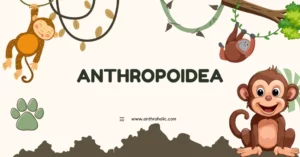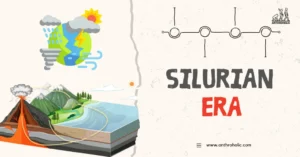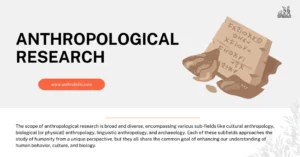AI Answer Evaluation Platform Live Now. Try Free Answer Evaluation Now
Humans or Homo-Sapiens
Humans, scientifically known as Homo-sapiens, are primates that have a unique position in the natural world, given our cognitive abilities, complex societies, and ability to reshape the environment. Through the lens of primatology, the study of primates, we can gain further insight into our own species, from our evolutionary history to our behavioral patterns [1].

The Evolutionary Journey
Homo Sapiens: A Unique Primate
Humans belong to the family of Hominidae, or great apes, which includes orangutans, gorillas, bonobos, and chimpanzees. The separation of the human lineage from other primates occurred approximately 5 to 7 million years ago [2]. From a primatological viewpoint, examining these evolutionary links can provide valuable insight into human behavior and development.
The Bipedal Revolution
A distinguishing characteristic of humans is bipedalism, the ability to walk on two legs. This major evolutionary step, which appeared nearly 4 million years ago, freed our ancestors’ hands for tool use and other complex tasks, setting the stage for further cognitive development [3].
| Stage | Years Ago (approx.) | Key Traits |
|---|---|---|
| Hominidae Separation | 5-7 million | Split from other primate lineages |
| Emergence of Bipedalism | 4 million | Two-legged locomotion |
| Development of Tool Use | 2.6 million | Evidence of stone tools |
| Emergence of Homo Sapiens | 300,000 | Modern human features |
Behavioral and Cognitive Aspects
Social Organization
Like many primates, humans are social animals. Primatology highlights the importance of social interaction for survival and reproduction in primates. Human societies, however, are characterized by exceptionally high levels of cooperation and complex social structures [4].
Language and Communication
The capacity for complex language distinguishes humans from other primates. While other species display communication through vocalizations, gestures, and facial expressions, the depth and complexity of human language, with its syntactic structure and abstract concepts, is unparalleled [5].
Cognitive Abilities
Human cognition is notable for abstract reasoning, problem-solving, and creativity. These abilities have been pivotal in our development of sophisticated technologies, cultural traditions, and scientific understanding [6].
Influence on the Environment
Humans as Ecological Engineers
In contrast to other primates, humans have reshaped the environment to a large extent. This environmental impact ranges from constructive (e.g., agriculture, urban development) to destructive (e.g., deforestation, pollution). Primatology offers a unique perspective to understand these human tendencies by comparing them with the environmental interactions of other primates [7].
The Anthropocene
The term “Anthropocene” has been proposed to denote the current epoch, in which human activities significantly impact the Earth’s ecosystems. The interplay between human actions and the environment is a key area of exploration in primatology, reflecting the need for sustainable practices [8].
Human Culture and Society
The Emergence of Culture
Culture, a set of shared behaviors and beliefs, is another domain where humans surpass other primates. Primates display elements of culture, such as tool use and social learning, but human culture is marked by its complexity, diversity, and dynamism. Our cultural practices involve intricate rituals, belief systems, art, music, and technology [9].
Socio-Political Systems
One of the fascinating aspects of human society is the variety of socio-political structures we have created. From small tribal communities to vast nation-states, humans display a range of governance and social systems, many of which are unique in the primate world. These systems influence individual behavior, social interaction, and resource allocation [10].
Table 2: Comparison of Primate and Human Social Systems
| Primates | Humans | |
|---|---|---|
| Group Size | Small (few to dozens) | Small to extremely large (millions) |
| Social Structure | Mainly hierarchical | Varies (egalitarian, hierarchical, etc.) |
| Resource Distribution | Direct competition, some sharing | Sharing, trading, systemic distribution |
Health and Disease in Humans
Disease Ecology
Disease and health are crucial areas of investigation in primatology, with implications for understanding human health. Primatologists study disease ecology to track how diseases spread among primate populations and how this can inform public health strategies in human societies. The recent COVID-19 pandemic underscores the relevance of these studies [11].
Aging and Longevity
Humans tend to have longer lifespans compared to most other primates. The aging process in humans, characterized by changes in biological, psychological, and social domains, provides insights into the interplay of genetics, environment, and lifestyle factors that influence longevity [12].
Future Perspectives
As we continue to advance in knowledge and technology, humans are entering a new phase of evolution that some are calling the “Technocene” era. This phase is characterized by our growing dependence on technology, artificial intelligence, and genetic engineering, raising fresh questions for primatological research and physical anthropology [13].
Conclusion
Understanding humans from a primatological perspective allows us to appreciate the depth and breadth of our species in a unique way. It reveals our shared heritage with other primates, illuminates our distinctive traits, and emphasizes our responsibility towards the planet we inhabit. As the story of Homo sapiens continues to unfold, primatology will undoubtedly continue to shed light on our past, present, and future.
References
[1] Stanford, C., Allen, J., & Anton, S. (2018). “Biological Anthropology: The Natural History of Humankind”. Pearson.
[2] “Human Evolution,” Smithsonian National Museum of Natural History. [Online]. Available: https://humanorigins.si.edu/evidence/human-family-tree.
[3] “Bipedalism,” The Australian Museum. [Online]. Available: https://australian.museum/learn/science/human-evolution/walking-on-two-legs-bipedalism/
[4] Melis, A. P., & Semmann, D. (2010). “How is human cooperation different?”. Philosophical Transactions of the Royal Society B: Biological Sciences, 365(1553), 2663-2674.
[5] Chomsky, N. (2015). “What Kind of Creatures Are We?”. Columbia University Press.
[6] Tomasello, M., & Call, J. (1997). “Primate cognition”. Oxford University Press.
[7] Foley, R. A., & Lahr, M. M. (2011). “The evolution of the diversity of cultures”. Philosophical Transactions of the Royal Society B: Biological Sciences, 366(1567), 1080-1089.
[8] Waters, C. N., et al. (2016). “The Anthropocene is functionally and stratigraphically distinct from the Holocene”. Science, 351(6269).
[9] Whiten, A., et al. (1999). “Cultures in chimpanzees”. Nature, 399(6737), 682-685.
[10] Boehm, C. (1999). “Hierarchy in the forest: The evolution of egalitarian behavior”. Harvard University Press.
[11] Ryan, S. J., & Walsh, P. D. (2011). “Consequences of non-intervention for infectious disease in African great apes”. PLoS One, 6(12), e29030.
[12] Austad, S. N., & Fischer, K. E. (2016). “Sex Differences in Lifespan”. Cell metabolism, 23(6), 1022-1033.
[13] Harari, Y. N. (2017). “Homo Deus: A Brief History of Tomorrow”. Harper.




